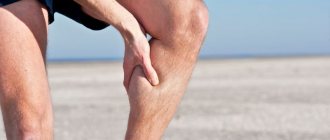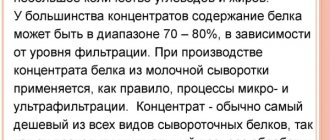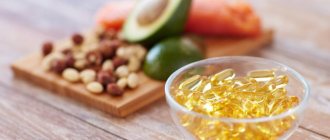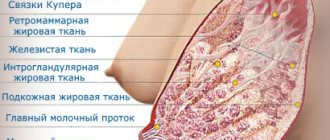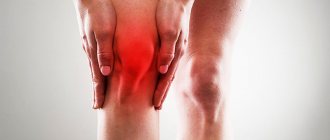What is lactic acid?
When there is physical impact on muscle tissue, the breakdown of glucose begins in it, as a result of which a special substance is released - lactic acid. It consists of hydrogen and lactate.
Hydrogen ions inhibit the passage of nerve impulses through muscle tissue, which leads to a decrease in muscle contractility and a slowdown in energy processes. The higher the content of hydrogen and, accordingly, lactic acid, the stronger the pain will be after physical activity. This condition may last for several days.
A little theory
Let's start with the fact that the universal source of energy for the body is glucose. With the help of the body's enzyme system, it is oxidized to molecules of water and carbon dioxide through the formation of intermediate substances. At the same time, the very energy through which we live is released.
There are several processes of glucose decomposition: glycolysis, aerobic breakdown of glucose, etc. We are not talking about this now, we are not in a biochemistry lesson. These processes differ, in particular, in the presence of certain intermediate products.
Enzymes are protein assistant molecules that greatly accelerate all biochemical reactions in the cells of our body.
By the way, glucose processing occurs in every cell. After all, each cell behaves as an independent structure, capable of providing for itself like an accomplished man. She receives “income” in the form of nutrients and “spends” it on her needs in order to live well and comfortably. Except that in a cage everything is much more complicated.
Man is an aerobic organism. That is, we cannot live without air. We need oxygen to break down glucose. But some of our cells have learned to live for a short time without oxygen.
Therefore, there is an aerobic pathway for the breakdown of glucose, with the formation, for example, of pyruvic acid (or pyruvate), and an anaerobic pathway with the formation of lactate (the very lactic acid in question). This is how muscles obtain energy during heavy physical exertion, when the supply of oxygen is difficult, but it is necessary to work.
Typically, the process of removing lactate from muscles is faster than its accumulation. If you experience a burning sensation, these are symptoms that more lactic acid is being stored than is being eliminated.
Lactate is an acid; it acidifies the environment in which it is found. The receptors on the muscle cells are irritated, and we feel that familiar burning sensation.
On the Internet you can find information that lactate is an ion of lactic acid. Remember that in biochemistry, lactate is usually called lactic acid itself.
Accumulation mechanism
Why does lactic acid form in muscles during exercise? When performing various physical exercises, muscle tissue experiences a maximum need for oxygen, which it needs for normal functioning and replenishment of energy resources.
During intensive training, the muscles are under greater stress, which prevents the flow of oxygen to them, as a result of which the blood flow slows down. This happens already in the first minutes of exercise, but the workout lasts a long time, so the body needs to get fuel in other ways. With a lack of oxygen, the synthesis of ATP from muscle tissue glycogen begins to activate, and this pushes for the formation of lactic acid.
The amount of this substance begins to increase rapidly, so the blood does not have time to expel it from the body, which leads to a gradual accumulation, causing a burning sensation in the muscles. Unpleasant sensations are not the only drawback.
Excess acid leads to a decrease in energy potential, the removal of creatine, stopping the production of proteins, and also releases cortisol, the stress hormone.
This process is caused not only by heavy and intense loads, but also by regular walking, as well as other types of physical activity - cleaning, gardening, swimming and others. In this case, the discomfort will be less pronounced.
Symptoms
When lactic acid is formed, it is immediately felt by the body in the form of pain in the muscle tissue. Sometimes after a difficult workout it can even be difficult to walk and roll over in bed. The muscles that have been most involved in physical activity experience particularly severe pain. For example, after exercises on the legs, the quadriceps and hamstrings will hurt.
It is important to finish your workout correctly
Obvious symptoms of this phenomenon will be increased fatigue, a feeling of “overwhelm” and even a feverish state. This condition can last up to 5 days, but usually goes away on its own. But sometimes an excessive amount of lactic acid can lead to rupture and damage to muscle fibers, so special measures and procedures are designed to get rid of these sensations.
It is also worth remembering that feeling tired during training does not always lead to pain later. However, if there is severe burning and discomfort during exercise, you should stop training or reduce the load so as not to damage the muscle fibers.
Delayed pain syndrome
The pain that occurs on the second or third day after training is only indirectly related to lactic acid. The main reason is muscles unprepared for hard work.
Pain syndrome appears in muscles unprepared for stress:
- for beginners,
- during intensive work without preliminary warm-up;
- after a long break from classes;
- when changing training programs;
- after excessive strain on weights.
The source of pain is in the torn muscle fibers, where inflammation occurs. Symptoms of the inflammatory process:
- severe pain when moving; aches and weakness in the body;
- fatigue, weakness, lack of energy;
- fever, sometimes requiring pills or medical intervention.
Only a small part of intensively working muscles is injured by lactic acid ions. Delayed pain syndrome occurs in fibers that are unprepared for work and tear from severe tension. Adaptation to training and adequate loads prevent such pain reactions.
How to remove lactic acid accumulated in muscles?
Athletes wonder: how to remove lactic acid from muscles? This question also interests scientists. There are several theories about this.
The first category of experts argues that it is impossible to remove this substance from muscle tissue, and you just need to endure the pain until the acid is removed on its own. The second category believes that this process can be influenced. If you remove the so-called fatigue toxins in a timely manner, you can push back or completely get rid of the pain syndrome. These experts offer several methods on how to disperse milk.
Quick removal of lactic acid is possible using the following methods:
- Antioxidants. These substances are extremely beneficial for our body. If you want to neutralize muscle pain, then drink 200–300 ml of pomegranate or cherry juice a day.
- To get rid of the feeling of fatigue after training, it is recommended to drink special decoctions. They can be made using nettle, rose hips, and birch leaves.
- Drinking regime. Drinking plenty of fluids during exercise will prevent increased formation of “fatigue toxins.”
- Baths with salt, pine tree oil, and turpentine can promote intensive removal of milk.
- You can expel substances formed in the muscles by visiting saunas or baths by increasing blood flow.
- A diet with plenty of vegetables, fruits, berries and herbs.
Exposure to high temperatures
Pain syndrome can be neutralized by exposure to high temperatures, for example, when visiting a bathhouse, sauna, or taking hot baths. Elevated temperature leads to improved blood circulation, swelling of muscle fibers and allows you to quickly remove lactic acid.
When visiting a sauna or bathhouse, remember that sitting there for a long time without a break is not recommended, as this will only make things worse. Stick to the following scheme: 10 minutes in the sauna, then rest for 5 minutes, then go back in for 15 minutes and rest. It is recommended to spend no more than 1 hour in the sauna per day. After the procedure, you should take a shower with cool water.
This method is not suitable for people with heart and vascular diseases, diabetes and high blood pressure.
It is not always possible to go to a bathhouse or sauna, then you can use a hot bath. The water temperature should be high enough. You need to go into it for at least 10 minutes. The heart area should not be in water. Then go out and douse yourself with cool water and relax outside the bathroom. This cycle can be repeated no more than 5 times. This is a great way to remove lactic acid and get rid of muscle pain.
How to disperse lactic acid by drinking?
A very effective way to remove milk is to drink plenty of fluids the day after training. In addition to filtered water, you can drink green tea, which is also an excellent antioxidant. In total, you need to drink at least 4 liters of liquid per day.
Although you can drink green tea, it is better to drink regular still water, as tea in large quantities can lead to increased blood pressure.
Massage
One option for getting rid of lactic acid in muscles is massage. Any high-level specialist knows how to remove “fatigue toxins” from tired muscles. It is best to carry out the procedure the next day after the lesson. This will help relax and also expel lactic acid from a specific muscle, for example, to disperse it after an intense leg workout.
Application in cosmetology
As already noted, lactate belongs to the group of AHA acids. And these substances help exfoliate dead particles of the epidermis. Due to this and other properties, lactic acid is actively used in cosmetology.
In addition to exfoliation, lactate, as a cosmetic product, can:
- eliminate inflammation, cleanse the skin of harmful microorganisms;
- whiten, remove age spots;
- remove cuticles without damaging the skin;
- treat acne;
- moisturize, improve elasticity, strengthen sagging skin;
- smooth out expression lines and reduce deep wrinkles;
- get rid of stretch marks on the skin;
- tighten pores;
- accelerate the regeneration of the epidermis;
- regulate the acidity of the skin;
- improve the condition of oily skin;
- give a platinum tint to blonde hair;
- eliminate the smell of sweat.
Best materials of the month
- Coronaviruses: SARS-CoV-2 (COVID-19)
- Antibiotics for the prevention and treatment of COVID-19: how effective are they?
- The most common "office" diseases
- Does vodka kill coronavirus?
- How to stay alive on our roads?
On women's forums, you often find positive reviews about lactic acid - as a component of home-made natural cosmetics. As a beauty product, lactate is used as a component of soaps, shampoos, creams and serums for skin rejuvenation, in peeling or depigmentation products. Lactic acid is also included in cosmetics for intimate hygiene as an antibacterial component.
Lactic acid can be added to finished cosmetics. For example, in a peeling preparation, lactate can be about 4 percent, in soaps, shampoos and balms - about 3 percent, in tonics and creams no more than 0.5 percent of the total composition. But before you improve ready-made products with lactate or create homemade cosmetics, you need to do a test for individual tolerance to the substance. It is also important to know that pure lactic acid can cause death of the mucous membranes, and excessive consumption of drugs with lactate, although it does not create a toxic effect, dries the skin.
It is safer to use the remedy of our grandmothers and great-grandmothers and use products rich in lactic acid as cosmetics. For example, a 30-minute yogurt mask will restore shine to dry hair, and a kefir face mask will prevent early aging and get rid of pigmentation and freckles.
How to prevent muscle pain?
It is the pain syndrome that causes hydrogen, which is formed as a result of the breakdown of glucose under the influence of physical stress. But the most valuable element of breakdown is lactate. It is responsible for restoring expended energy resources. During training, our muscles experience enormous stress, so they replenish their energy reserves at the expense of ATP, which lactate helps.
When performing strength or intense exercise, the athlete experiences a burning sensation in the muscles, which signals the maximum accumulation of lactate. One of the tasks after class is to remove lactic acid and disperse it throughout the body.
If you want to minimize pain after physical activity, then follow these rules:
- A shortened rest between sets will help disperse lactate through the blood vessels.
- If you delay your rest time, your muscles will cool down. This will lead to a decrease in lactate production.
- Alternate strength exercises with cardio (running, jumping rope, cycling).
- Cardio exercise will allow you to remove lactate from tired muscles to those that are included in the work later. It is this property that provides muscle endurance for long-term training.
- Post-workout nutrition. In order to replenish energy reserves and expel lactic acid from muscle tissue, you need to adhere to some basic nutrition: eating complex carbohydrates; increased amount of protein; sports nutrition preparations - citrulline, beta-alanine, which will help get rid of pain in the muscles.
A little physiology: where does pain come from?
Flowchart of how lactic acid is formed
Working in the gym with iron refers to those types of muscle activity that go beyond optimal limits and are stressful. In such cases, the body turns on emergency cell energy supply systems.
Read more about all the ways to eliminate muscle pain after training:
Normal physical activity on muscles does not exceed 50% of the possible maximum tension. Energy nutrition of cells in this mode occurs due to the breakdown of fats with an increased supply of oxygen to working areas of the body.
Strength exercises with weights go beyond the 50 percent threshold of maximum loads. During such work, the muscles become extremely tense; their strong contraction prevents the cells from being saturated with blood and oxygen. Pictured: Kai Greene
The heart muscle, working to the limit, does not have time to pump blood to the affected areas; it itself experiences oxygen starvation.
Under such conditions, the body transitions to anaerobic (oxygen-free) metabolism. Cells receive energy resources as a result of glycolysis: the breakdown of glucose into 2 organic acids.
- ATP (adenosine triphosphate) is absorbed by cells and provides energy for all biochemical processes in the body.
- Lactic acid, the second product of glycolysis, cannot leave the muscle fibers through the bloodstream during intense exercise and is forced to accumulate in them.
- The retention of lactic acid in the muscles leads to its decomposition into lactate and hydrogen ions.
Lactic acid content in blood
The more ATP the cells receive, the longer the body can work at increased intensity. The stress regime of energy supply ensures that muscles work at maximum loads, but is accompanied by the accumulation of lactic acid in them.
Sports nutrition and muscle pain
How to relieve pain from the accumulation of lactic acid in muscles using sports nutrition? It is enough to include the following drugs:
- Glutamine is the main amino acid from which muscle cells are built. It not only promotes better recovery, but also helps expel excess lactic acid. Sold in powder or tablet form.
- L-carnitine is famous for its ability to help burn fat, but it can also help reduce breast milk and improve athletic performance. Available in liquid form or in the form of tablets or capsules.
- Creatine will help flush out “fatigue toxins” from muscle tissue. It also has an anti-inflammatory effect.
- Beta-alanine will not only remove lactic acid, but will also prevent it from appearing in large quantities and will reduce the appearance of pain and burning in the muscles during training.
- Carnosine is a drug that reduces the content of hydrogen ions formed as a result of the breakdown of glucose. Available in tablets.
Thus, lactic acid in the muscles is both an advantage and a significant disadvantage of physical activity. In order to remove it after training or reduce synthesis, there are many methods: folk remedies, sports nutrition, sauna and hot bath. Massage, which you can do yourself, will help remove the acid. The best way to prevent the formation of “fatigue toxins” and pain is to adhere to an exercise regimen.
The article was checked and approved by Elizaveta Anatolyevna Krizhanovskaya, a practicing family doctor - see the authors of the site
- 1
- 3
Ideal daily fluid intake
Many people suffer from lack of fluid without even realizing it. A healthy person needs to consume about 2.5 liters of fluid per day for normal breathing, sweating and elimination. This is why general standards indicate a minimum fluid intake of 2 to 3 liters per day . [21] However, this is a minimum value that should be increased during physical and sports activity or on hot summer days.
This means that you should drink at least 8-12 cups of water per day , 5 of which should be pure water. But again, these indicators do not take into account external temperature and physical activity .
A good way to calculate your ideal daily fluid intake is to multiply your body weight (in kilograms) by 50 ml. [21] For example, 80 kg x 50 ml = 4000 ml , this means that if you weigh 80 kg, your daily fluid intake from food and drink should be 4 liters . You can more accurately calculate your optimal fluid intake using a hydration calculator.
